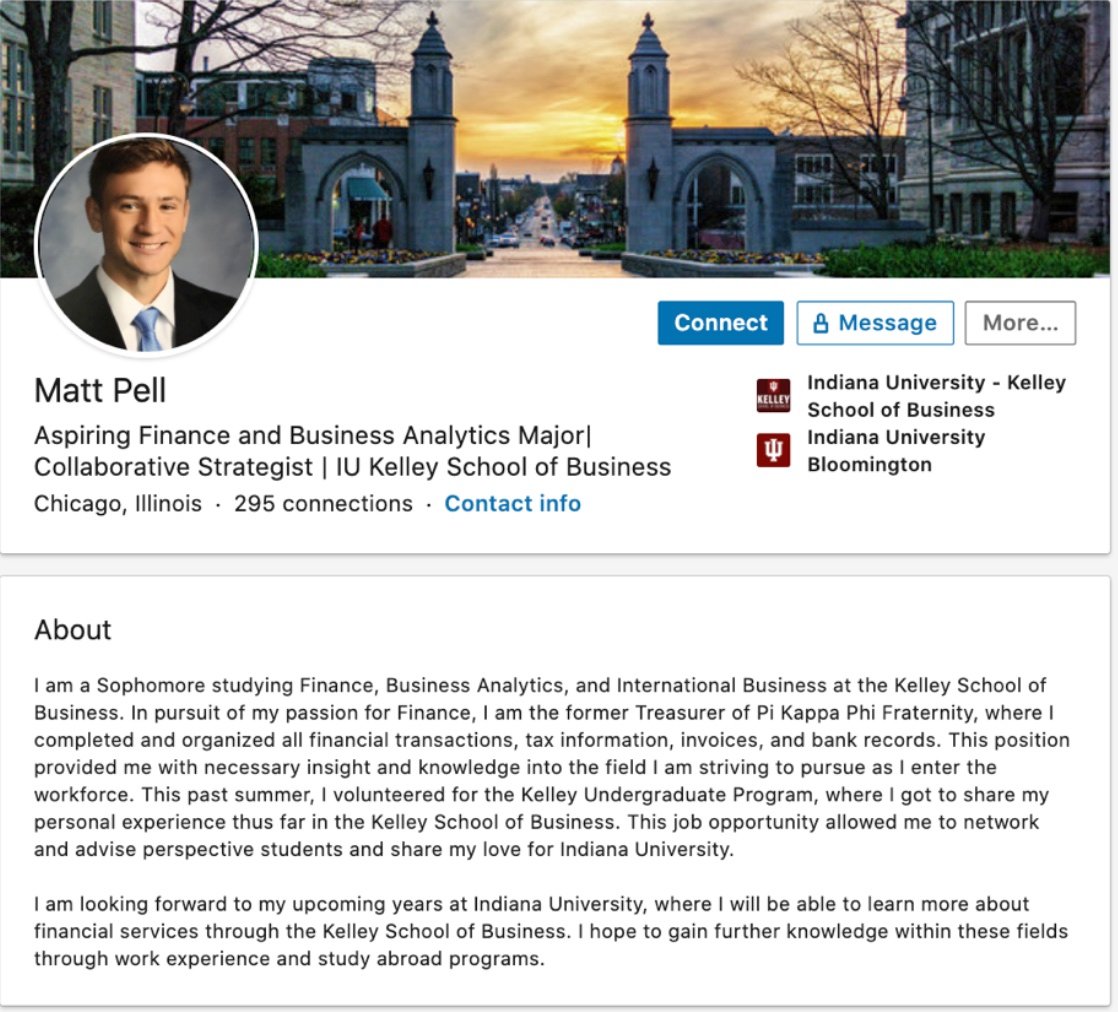Updated December 2025
In today’s world, if you want to shape your career path and create opportunities for yourself, you need to establish a professional online presence and harness the power of social media.
LinkedIn and other platforms have become essential tools for showcasing your skills, establishing a network of contacts, and building your personal brand—even if you’re a student or recent graduate with little professional experience.
Wondering how to get started? Read on for actionable tips that can help you build a compelling online presence for career growth.
TABLE OF CONTENTS
- Why Your Online Presence Matters for Career Success
- Crafting Your Personal Brand on Social Media
- LinkedIn: Your Ultimate Professional Networking Hub
- Leveraging Other Platforms for Professional Visibility
- Navigating Social Media Etiquette for Professionals
- Monitoring and Managing Your Online Presence
WHY YOUR ONLINE PRESENCE MATTERS FOR CAREER SUCCESS
So how can social media affect job opportunities? For most employers today, it’s standard practice to Google potential candidates before calling them for an interview. A Harris Poll found that almost two-thirds of Canadian hiring managers research job candidates through social media, and 41 per cent have rejected a candidate based on what appeared on their social media profiles.
You might think a better strategy is to stay off the radar. But the same survey found that one in five hiring managers will pass on a candidate who has no social media presence.
The takeaway? Building a professional online presence through your social media accounts is critical. Employers need to be able to find you, and you need to come across as a professional who would be an asset to an organization.
CRAFTING YOUR PERSONAL BRAND ON SOCIAL MEDIA
If you Google yourself, what do you see? What impression would a potential employer or client get from your LinkedIn, Instagram, or other social media profiles? What about your personal website, TikTok channel, or blog? Or your comments on sites like Reddit or Yelp?
All these things form your personal brand, whether you’ve consciously tried to craft it or not. They tell your story and influence how others see you.
If you want your digital footprint to convey the right message, you need to take control of the way you present yourself. Here are some tips on leveraging social media for professional development:
- Clean up your accounts. Go through your public profiles and delete or hide any content that might reflect badly on you as a professional. Also, deactivate any accounts you no longer use.
- Choose the right platforms for your industry. For instance, artists and designers might want to focus on visually driven platforms like Instagram or Behance, while marketing specialists or project managers might concentrate on LinkedIn and X (formerly known as Twitter.)
- Select a good profile photo. Use the same picture across all your channels to unify your brand.
- Share relevant industry news or articles. This shows hiring managers that you’re up to date on the latest trends. For bonus points, add your own comments or ask your audience a thought-provoking question.
- Be authentic. Showcase your own voice and personality, and talk about issues you’re genuinely interested in.
![]() Are your social media accounts ready for a hiring manager’s eye?
Are your social media accounts ready for a hiring manager’s eye?
LINKEDIN: YOUR ULTIMATE PROFESSIONAL NETWORKING HUB
When it comes to building a professional online presence, LinkedIn is key. Because it’s aimed specifically at career professionals and job seekers, it’s often the first place employers go to learn more about an applicant.
Optimizing Your LinkedIn Profile
To help attract potential employers, follow these LinkedIn profile optimization tips:
- Use a professional-looking photo. We mentioned this earlier, but it’s worth repeating. The photo should focus on your face and should not use any special filters.
- Write a compelling headline. A lot of people just use their job title, but being more creative can help you stand out. Try something like “Computer science grad with strong skills in artificial intelligence and machine learning” or “Marketing student with experience in social media management.”
- Include a summary that tells your story. Describe your skills and experience and what makes you unique. Try to demonstrate how you can make a positive difference to an organization.
- Use relevant keywords. Highlight phrases that recruiters or hiring managers commonly search for. Boost your visibility by using these terms in the headline, summary, and other sections of your profile.
- Create a custom URL. By default, your profile URL is long and complicated, but you can edit it in your profile settings. Change it to something shorter that can easily be shared on your resume.
 An example of a good LinkedIn profile summary. Source: Social Selling Coach
An example of a good LinkedIn profile summary. Source: Social Selling Coach
Expanding Your Network on LinkedIn
It’s often said that career success is all about who you know. That’s why learning how to expand your professional network is a key step in learning how to use LinkedIn to get a job.
Start by synching your profile with your email address book and requesting connections with colleagues, instructors, internship supervisors, and anyone else you know who could potentially help you. Use LinkedIn’s Alumni Tool to find working professionals who graduated from the same school as you—chances are they’d be happy to connect with a fellow alum.
When you do reach out, craft a personalized message. Make it informed and human; no one likes being spammed by a bot. Show that you’ve read their profile and that you have a specific reason for wanting to connect.
Remember: the quality of your connections is far more important than the quantity. As you gain experience and meet more people, your professional network will naturally expand.
 Be thoughtful when reaching out to potential connections
Be thoughtful when reaching out to potential connections
Showcasing Skills and Accomplishments
If you’re just starting out in your career, you probably don’t have extensive work experience. But you can still craft an impressive LinkedIn profile by focusing on your skills and accomplishments. Here’s how:
- Detail what you have done. It’s not all about paid work. Include any internship or volunteer experience you have, languages you speak, or certifications you’ve completed.
- List valuable skills. Review job postings that interest you and take note of the skills they require. Then, in the “Skills” section of your profile, select the skills you have that match those that are in demand.
- Take a skills assessment. LinkedIn offers online tests that allow you to verify your skills and earn a badge for your profile. These can be a good way to demonstrate proof of your abilities.
- Share your work. You can share blog posts you’ve written or videos you’ve produced—anything that showcases your expertise and thought leadership.
- Ask for recommendations. Reach out to contacts who are familiar with your capabilities and see if they would be willing to write a recommendation for your profile (the “Recommendations” section has a simple tool that lets you do this.) The most valuable recommendations come from people who either supervised you or worked with you closely.
LEVERAGING OTHER PLATFORMS FOR PROFESSIONAL VISIBILITY
To build an effective online presence, you should learn how to leverage social media platforms beyond LinkedIn. Below are some of the biggies.
X (formerly known as Twitter)
X is a conversational platform that focuses on real-time updates. To make the most of it, follow companies and industry professionals you admire and engage with their posts. Retweet content you find interesting and share your own thoughts and comments. Pro tip: adjust your direct message (DM) settings to allow anyone to contact you.
Instagram is driven by visuals and is a great place for creative types like graphic or interior designers to showcase their work. But anyone can tailor Instagram to their personal brand by sharing a mix of carefully curated photos or videos that show off their interests and demonstrate their industry knowledge. Add a caption that explains why the image is significant and engage your audience by asking a question or soliciting feedback.
TikTok
TikTok is all about short-form videos. Creating how-to or behind-the-scenes videos that show off your skills and expertise can boost your professional visibility. As with other platforms, commenting on others’ videos or mentioning them in your own can be an excellent way to draw attention from industry pros and grow your network.
NAVIGATING SOCIAL MEDIA ETIQUETTE FOR PROFESSIONALS
Nurturing your career growth through social media requires understanding and following generally accepted codes of conduct. Here are a few do’s and don’ts of engaging online.
DO ask yourself what your purpose is before you post. You should always be mindful of what you put online.
DON’T post anything you wouldn’t want the whole world to see. You can keep separate personal and professional accounts, but be very careful with your privacy settings.
DO act professionally. Keep your language clean and your tone respectful.
DON’T complain about your classmates, instructors, boss, or company. That kind of trash talk won’t sit well with hiring managers.
DO engage with your audience. Keep up with industry trends and join the conversation.
DON’T respond emotionally to negative comments. Instead of getting hostile or defensive, remain calm and composed. Try to learn from constructive criticism.
 It’s important to follow proper netiquette
It’s important to follow proper netiquette
MONITORING AND MANAGING YOUR ONLINE PRESENCE
Managing your online presence involves keeping your profiles up to date and liking, commenting on, and sharing content that aligns with your professional persona.
It’s also a good idea to monitor your online presence and take steps to manage damaging content or negative information on your social media accounts and in other spaces. Tools like Google Alerts and Hootsuite allow you to keep tabs on what’s being said about you so you can manage your online reputation. You can get notified when your name pops up on social media platforms or other sites, which lets you respond promptly to any less-than-flattering comments.
GET HELP MOVING FORWARD IN YOUR CAREER
All Herzing College students and grads are eligible for continuous employment assistance. That includes one-on-one help with creating resumes, locating suitable opportunities, and preparing for interviews.
Click below to get more details on what our career services team can do for you. We’re here to help!







